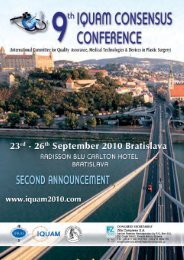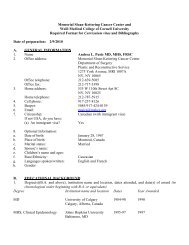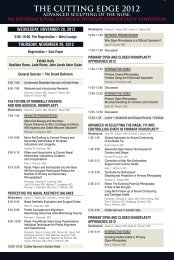Download pdf file - IPRAS
Download pdf file - IPRAS
Download pdf file - IPRAS
- No tags were found...
You also want an ePaper? Increase the reach of your titles
YUMPU automatically turns print PDFs into web optimized ePapers that Google loves.
Great communicators will understand the values ofthe culture they are speaking to. Although it may beimpossible to truly know each audience member’sculture in detail, it is important to understand thebasic philosophies behind cultural differences.For example, collectivist cultures – commonlyrepresented in Asian countries – value teamwork overindividual achievements. Subsequently, announcingindividual accomplishments is generally perceivedas arrogant and egocentric within collectivistsocieties. Conversely, individualistic cultures valuepersonal accomplishments and prefer to knowwhat someone achieved individually as opposed towhat a team undertook collectively. Speakers whoare culturally sensitive will keep this in mind whenphrasing who accomplished something. Anotherbasic example of cultural sensitivity involves theexpression of emotions. While emotional expressionmay be endearing in Latin-American countries,many Asian cultures may perceive such expressionsas a sign of lacking discipline and self-control. Aswith many of these tips, these are not rules set instone, but considerations a speaker should keep inmind when evaluating cultural values.A final example of cultural adaptation relates tothe way an audience or its subculture thinks. Greatcommunicators keep in mind how technicallyoriented or pragmatic an audience’s subculturemay be. For example, when speaking to softwareengineers the balance should appeal to theaudience’s logic instead of their emotions or, inGreek terms, emphasize logos instead of pathos.In this situation, the speaker should communicatefrom knowledge and reason, not from emotion orsimply a desire to entertain.It should go without saying that the speaker mustknow the subject matter. However, it never hurts toprobe the most common public resources and findout what additional information is readily availableto your audience. In the age of mobile smartdevices,anyone and everyone in a given audiencemight access Wikipedia or google the subject athand. An experienced speaker will understandthe problem she or he plans to discuss, know howto define it clearly, and anticipate the audience’sinformational resources. Identifying, sharing, andcorrecting definitions or conceptualizations are keyto establishing a common language and rapportwith an audience.Experienced communicators commonly identifya suitable theme for their talk; a simple messagethey can open with and repeat or revisit severaltimes. For example, if the theme is awareness, theymight repeat the sentence: “Be aware!” severaltimes throughout the presentation. A hallmark ofgreat orators is to “take it home” and return to thetheme at the end of the speech. When preparing atalk, one should try to think of no more than threethings that the audience must remember after thepresentation. It is acceptable for speakers to telltheir audience when something is important and,given that the message is concise enough, an oratorshould take the liberty to ask that listeners writesomething down when it seems appropriate.Great orators structure their presentation carefullyand meticulously consider each structural elementwithin a presentation, like the introduction, thebody, and the conclusion. The body is commonlydivided into at least three points, but ideally nomore than seven. Experienced speakers make surethat each of these points follows a similar algorithm.For instance, they make a statement, explain thestatement, provide an argument to support it, andfinally they give at least one example that sustainstheir point. This process is then repeated andapplied to the presentation as a whole. Structurewill make it easier to establish a reasonablealgorithm or process. In great presentations thearguments evolve through a dramatic progressionand arrive at a knockout point; the conclusion. Thisstructure facilitates the audience’s ability to followthe logic and understand the progression. Wheneverything is structured well, it should be very clearhow the speaker arrived at her or his conclusion.Great communicators also keep in mind that theconclusion should consist of no more than threepoints and that an ideal presentation ends with aconclusion that supports the theme.Similar to focusing each argument, a goodcommunicator will ensure that each and everyexample supports the concept. An experiencedspeaker uses as many relevant examples asnecessary and it is common practice to put thestrongest example last. Sometimes orators even usenegative examples as long as the instance supportsthe concept. Any example that does not relate tothe theme or concept is irrelevant.The most common mistake laymen make inIssue 6 www.ipras.org <strong>IPRAS</strong> Journal 29
















